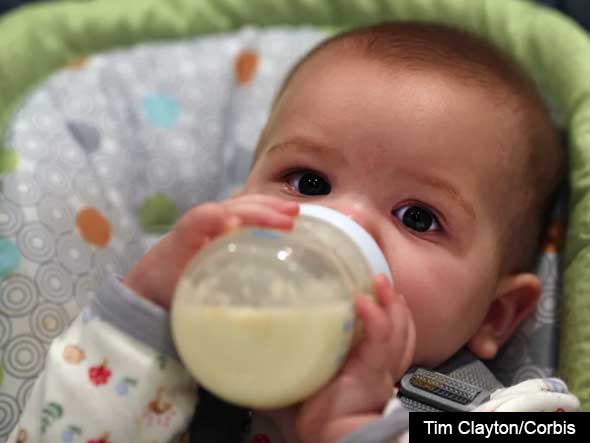Microplastics are tiny fragments of plastic, often too small for the eye to see. They’re created as plastic degrades.
And they’re everywhere.
They’re in oceans, thanks to plastic garbage. They’re in fish. They find their way into the water we drink in various ways, from surface runoff and wastewater effluent to particles deposited from the atmosphere.
And they’re released in huge quantities from plastic baby bottles when they’re used to prepare formula according to standard guidelines, a new study in the journal Nature Food finds.
The researchers selected 10 types of plastic baby bottles, representative of nearly 70% of the global market, and measured the levels of microplastics released when they were used to prepare infant formula according to guidelines set by WHO. Those guidelines call for mixing powdered formula with water heated to at least 158 degrees Fahrenheit to reduce bacteria loads.
What they found was that the release of microplastics was highly temperature sensitive, Boland said. “What’s happening is that there’s an interaction between the [plastic] polymer and the water,” Boland said. “It’s almost like a flaking of the surface of the actual plastic itself.” Hotter water exacerbates that flaking, and so does shaking the bottle.
When the researchers filled the plastic baby bottles with room temperature water and shook them for about 60 seconds, to simulate normal formula preparations, “you get hundreds of thousands of microplastics,” he said. When they increased that temperature to 158 F, the bottles released anywhere from 1 million to 16 million particles per liter. The bottles also released trillions of even smaller nanoplastics — tiny bits of plastic ranging in size from 10 nanometers up to 1 micron – so many that “we stopped counting them,” he said.
The plastic bottles continued to release microplastic particles over 21 days of testing.
The researchers then used global sales data for plastic baby bottles and information on national breastfeeding rates to estimate the potential exposure to microplastics for infants around the world in the first 12 months of life. Overall, they estimated that the average infant consumes more than 1.5 million microplastics particles per day.
But those estimates varied drastically depending on the region of the world. Infants in higher-income parts of the world, including North America and Europe, where breastfeeding rates are lower, could potentially be consuming well over 2 million microplastic particles per day, they estimated. Meanwhile, in China, where glass baby bottles are more popular, the average infant’s consumption of microplastics is estimated to be in the “tens of thousands” of particles, Boland said.

